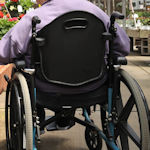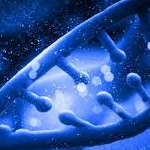
Dr. Maxwell Nartey
Professor of Symptometric Science, American School of Symptometry, NFP
Many individuals are suffering from multiple sclerosis. When they walk, their balance is off. Some individuals have lost flexibility in their ankle; and many are now in a wheelchair because their knees and the bones in their legs can no longer support their body. For support, some of them walk with a cane.
What really causes multiple sclerosis? To answer this question, it is important to know how the disease started. MS, as it is popularly called, begins with the production of sclerotin; and it is sclerotin that sclerotizes the person’s eight muscle proteins. The eight muscle proteins are: titin, fibrillin, dystrophin, troponin, tropomyosin, elastin, actin and myosin.
Some of these muscle proteins are also in cartilage, fibrocartilage, ligaments and tendons.
What is sclerotin? It is a polysaccharide (starch) mixed with a lot of nitrogen. This makes it a starchy protein. A starchy protein hardens everything in its path.
To sclerotize means to harden. To harden is to take water atoms out of collagen so collagen will no longer be flexible. It is keratin that produces our nails; dentin; and ossified tissues that are supposed to remain rigid. Everything else in the human body is supposed to be flexible. It is the protein called elastin, which our fibroblasts produce, that makes everything else elastic and flexible.
If part of the brain is sclerotized, a lesion will occur. It was the discovery of lesions on the brain of MS patients that led to the association of MS with lesions on the brain. The underlying cause of MS goes deeper than lesions on the part of the brain that hosts reticular formation and the reticular activation system.
The question is, why is water not getting into the cells in gray matter where reticular formation is? Why is water not getting into many muscle cells and the cells that produce ligaments, cartilage, tendons, and viscera? The answer is cell lockdown.
Cell lockdown means nutrients and resources can no longer get into the cytoplasm to reach the nucleus where DNA, 70,000 genes, and the 46 chromosomes are. Conversely, wastes cannot exit the cell. Plaque is one of the major causers of cell lockdown.
Plaque
What causes plaque? Oxysterol and cholesterol from saturated fat, are mostly responsible for causing plaque that lines the inner wall of the arteries, arterioles and capillaries. Then, they are also responsible for coating the plasma membrane of many cells to cause cell impermeability.
Therefore, there is a connection between the food a person eats frequently, and the abundance of sclerotin in their body. Eating meat, fruits, vegetables, fish, etc. misses the point. The emphasis is on plaque, not on the person’s dietary preferences.
How can kinase and cyclins in the fibroblasts divide the cells to produce collagen if plaque is in the way? They cannot. Kinase and cyclins cannot have resources like heat, electricity, and salt, and nutrients like amino acids, vitamins, and minerals to divide the cells; and all this is because plaque is in their way.
Is multiple sclerosis genetic? No, it is not because it is only those who have an inordinate amount of sclerotin in their body who will have multiple sclerosis.
The law of quantum physics applies to the human body. In quantum physics, emptiness does not exist, meaning, if collagen cannot be produced, sclerotin will be produced to take collagen’s place.
The adverse effects of sclerotin
Sclerotin will weaken filtration force in the capillaries, thereby weaking capillary perfusion. It is our capillaries that supply oxygenated blood, heat and electricity to our nerves. Therefore, if our nerves cannot have oxygen, electricity and heat, they will neither transmit nor receive signals or stimuli. Also, our neurons cannot store neurotransmitters.
Furthermore, sclerotin will harden the spinal cord to make it impossible or extremely difficult for the spinal nerves to function. This will begin to affect balance and coordination.
Finally, sclerosed spinal nerves will cause degenerative diseases and progressive neuropathy (numbness) in the toes or fingers, numbness in the legs, and weakness in the legs and hands, thus compelling the person to walk with a cane for support.
There have been situations where sclerosed nerves caused fast blinking, slow blinking, sleeping with the eyes half closed or half open, dropping objects, loss of grasp, foot drop, paralysis of the lower limbs, food descending too slowly into the stomach or staying in the chest for about 15 minutes, not being able to close the mouth, drooling, severe constipation, slurred speech, etc.
Eventually, the heart and the lungs will be affected, and swallowing food or water will become increasingly difficult. It is the paralysis of the lungs, throat and heart that will kill the MS sufferer.
There have been all kinds of treatments for MS, but they are all symptom treatments that cause further deterioration of the person’s ailment. What is needed is not treatment. What is really needed at this time is, understanding multiple sclerosis from a totally different perspective. This totally different perspective is the Symptometry perspective. It unmasks the source of multiple sclerosis.
Reversing multiple sclerosis
The reversal of MS lies in reversing cell neglect and cell lockdown. Then, the enzymes called kinase and cyclins that enhance cell division in the fibroblasts should not be denatured.
Alcohol denatures enzymes. Why would a person who has MS drink alcohol? Why would a person with MS have metals in their body? Metals denature enzymes. For this reason, they must be liquefied.
Also, the diet of a person who has MS must be modified so the harm that sclerotin keeps inflicting on the eight muscle proteins can be stopped and reversed. Some of these proteins like elastin, actin and myosin, are also in the tendons, ligaments, and cartilage, as well as in the fibrocartilage of the vertebrae. A person with MS will not be strong unless they resume the production of these eight muscle proteins.
© Copyright 2021, The American School of Symptometry, NFP. No part of this publication may be reproduced or transmitted in any form or by any means, electronic or mechanical, including photocopying, recording, or by any information storage and retrieval system without the written permission of The American School of Symptometry, NFP. Library of Congress copyright number Txu 1-621-370, Washington D.C.


 Previous Post
Previous Post Next Post
Next Post